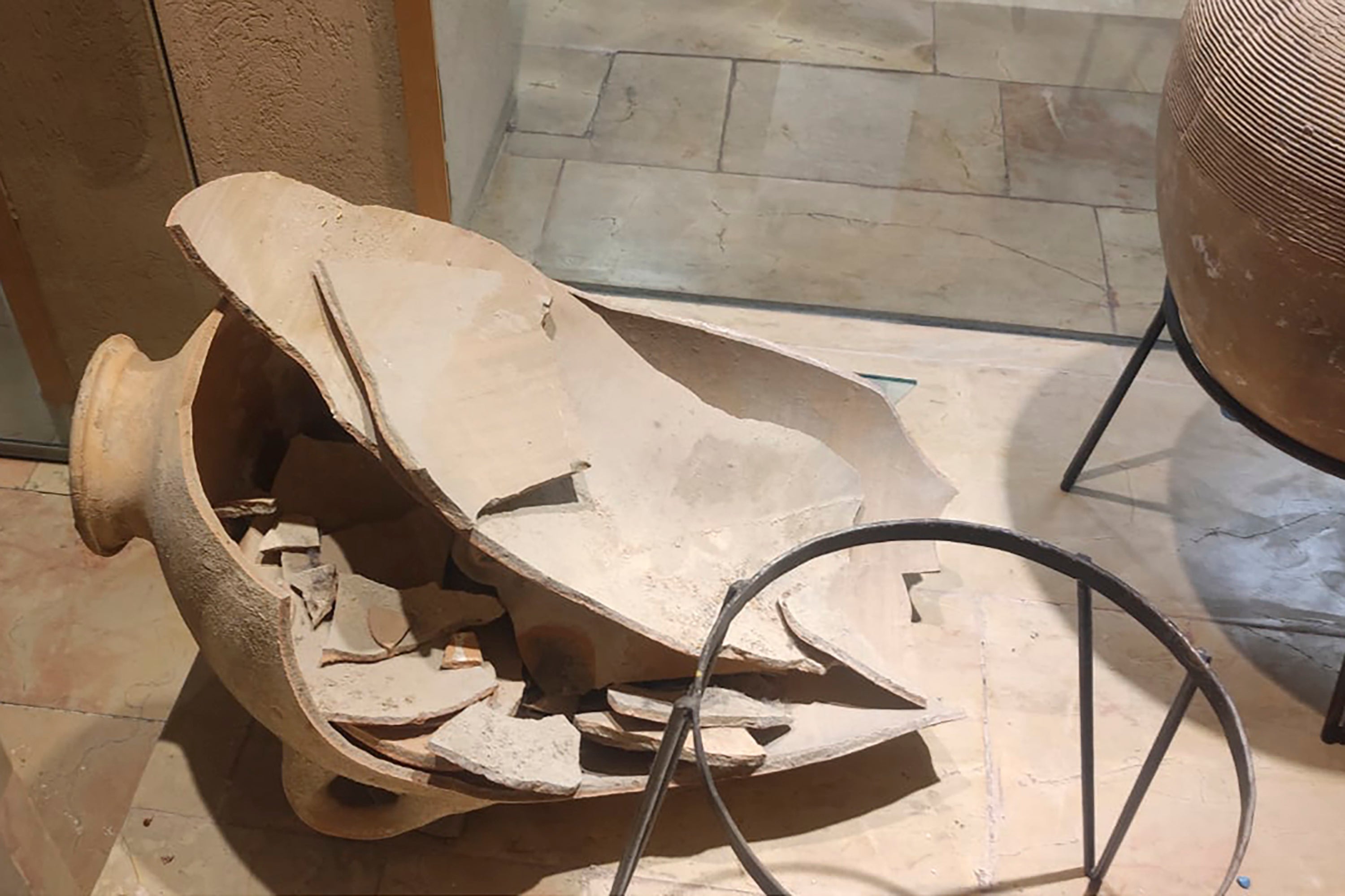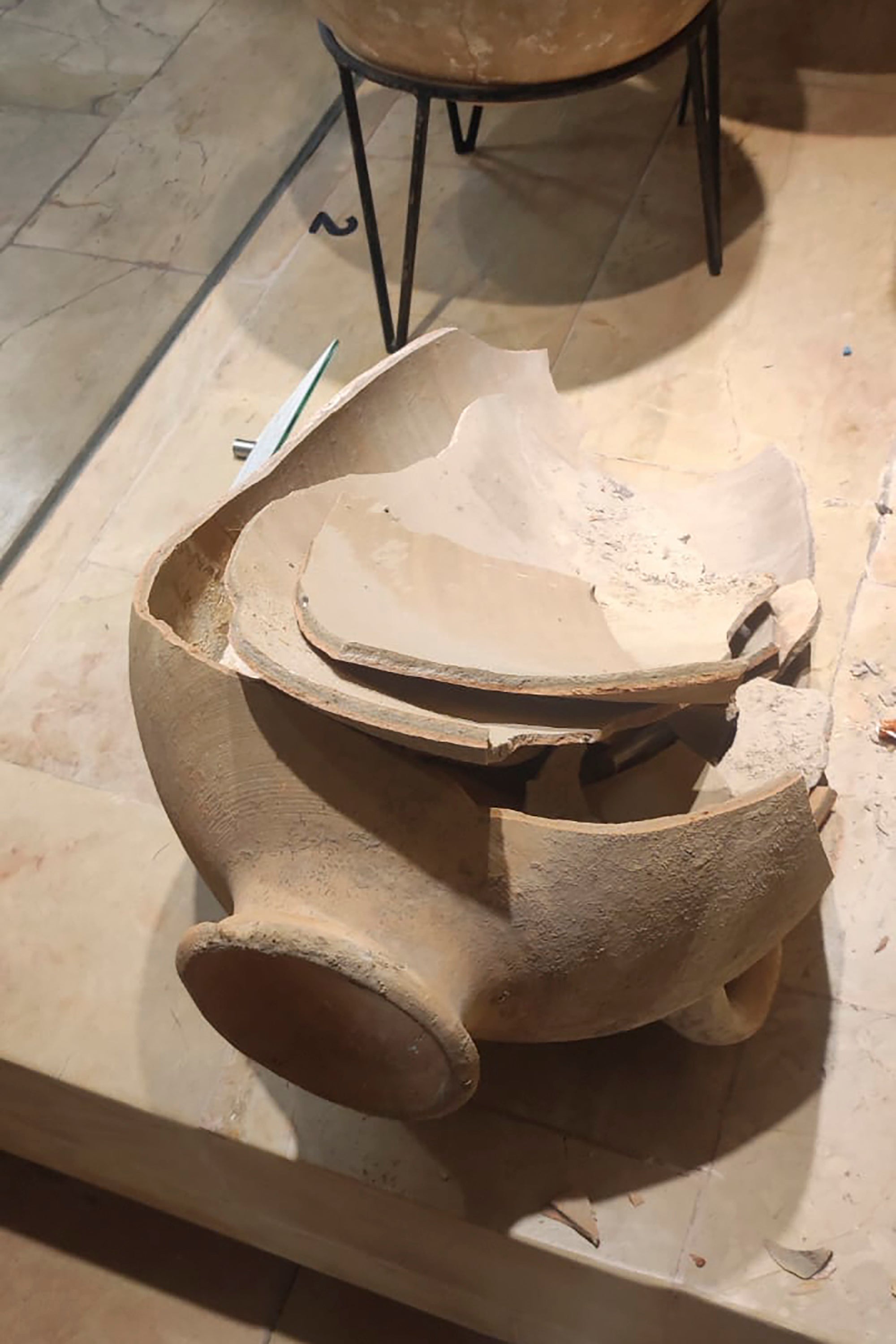Boy, four, smashes open 3,500-year-old jar at Israel museum: ‘He just wanted to see what was inside’
The boy has now become a local celebrity

Your support helps us to tell the story
From reproductive rights to climate change to Big Tech, The Independent is on the ground when the story is developing. Whether it's investigating the financials of Elon Musk's pro-Trump PAC or producing our latest documentary, 'The A Word', which shines a light on the American women fighting for reproductive rights, we know how important it is to parse out the facts from the messaging.
At such a critical moment in US history, we need reporters on the ground. Your donation allows us to keep sending journalists to speak to both sides of the story.
The Independent is trusted by Americans across the entire political spectrum. And unlike many other quality news outlets, we choose not to lock Americans out of our reporting and analysis with paywalls. We believe quality journalism should be available to everyone, paid for by those who can afford it.
Your support makes all the difference.A young boy who accidentally broke a rare 3,500-year-old jar in an Israeli museum has been invited back.
Alex Geller, the boy’s father, said his -four-year-old son is exceptionally curious, and that the moment he heard the crash last Friday, “please let that not be my child” was the first thought that raced through his head.
“He’s not a kid that usually destroys things, he just wanted to see what was inside,” Geller told The Associated Press.
The Bronze Age jar is one of many artifacts exhibited out in the open, part of the Hecht Museum's vision of letting visitors explore history without glass barriers, said Inbar Rivlin, the director of the museum, which is associated with Haifa University in northern Israel.
Rivlin said the jar was displayed at the museum entrance, and that the family quickly left without finishing their visit. She wants to use the restoration as an educational opportunity and make sure they feel welcome to return.
Geller and his family live in the northern Israeli town of Nahariya, just a few kilometers (miles) south of the border with Lebanon, in an area that has come under Hezbollah rocket fire for more than 10 months in a conflict linked to the war in Gaza.
They were spending the summer break visiting museums and taking day trips around Israel to escape the tensions, Geller said.
There were a lot of kids at the museum that day, and Geller said he fervently prayed the damage had been caused by someone else. When he turned around and saw it was his son, he was “in complete shock.”
“My wife responded faster than me, she grabbed our son to take him outside and calm him down and explain that it was not OK what had happened,” said Geller.
He went over to the security guards to let them know what had happened in hopes that it was a model and not a real artifact.
“We said, if we need to pay we will, whatever will be will be. But they called and said it was insured and after they checked the cameras and saw it wasn’t vandalism they invited us back for a make-up visit.”

Geller said his son didn’t quite understand the international interest in the broken jar, but their tight-knit community in Nahariya was following the media reports with interest and was proud of their local celebrity.
The Hecht Museum hopes to harness that interest to encourage more people to visit the museum and learn about artifact restoration.
Using 3D technology and high-resolution videos of the jar, experts plan to complete the restoration in a matter of days. It could be back on display as early as next week.
“That’s what’s actually interesting for my older kids, this process of how they’re restoring it, and all the technology they’re using there,” said Geller.
The jar, which had been on display at the museum for 35 years, was one of the only containers of its size and period that was still complete when it was discovered. It was likely used to hold wine or oil, and it dates back to between 2200 and 1500 B.C.
Roee Shafir, a restoration expert at the museum, said the repairs would be fairly simple, as the pieces were from a single, complete jar. Archaeologists often face the more daunting task of sifting through piles of shards from multiple objects and trying to piece them together.
He said the restoration will take several days because they use special glue to connect just a few pieces at a time. The process will be documented for educational purposes.
Shafir, who will painstakingly reassemble the jar — even though he says he hates puzzles — still wants to keep the artifacts accessible to the public, even if accidents happen. He said it's important for visitors to touch artifacts because that connection can inspire a deeper interest in history and archaeology.
“I like that people touch. Don’t break, but to touch things, it’s important,” he said.
Geller said his son is too young to decide if archaeology could be a career path. For now, he’s looking forward to visiting the museum again on Friday, as a special guest, and starting nursery school in September.